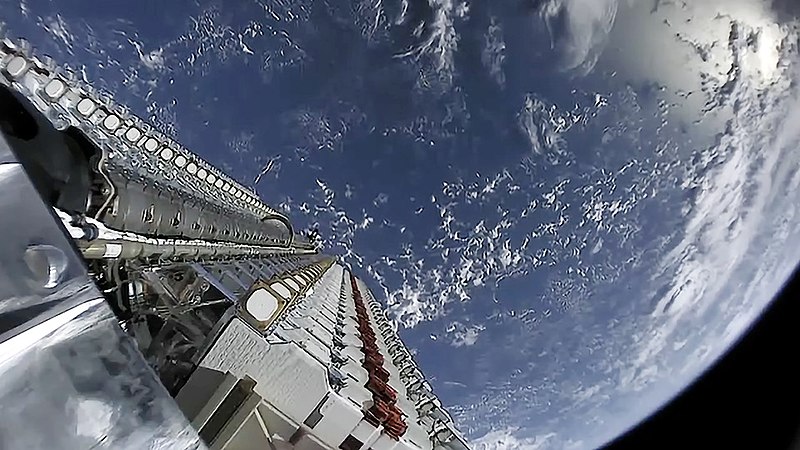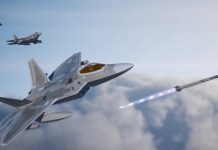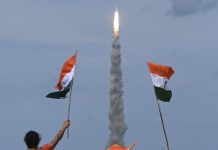The Russian Federation has reportedly developed a new system that can detect and counter the signals from SpaceX’s Starlink, which has proven crucial for Ukraine during the ongoing conflict.
Since SpaceX began providing Starlink terminals to Ukraine after Moscow’s full-scale invasion, the system has become essential for Ukrainian forces, particularly in directing aerial and sea drones to strike key Russian targets.
However, this technological advantage has not gone unnoticed by Moscow, which has been working on countermeasures to mitigate the effectiveness of Starlink communications.
According to the state news agency TASS, Russia’s Center for Unmanned Systems and Technologies (CBST) has developed a system called the Kalinka monitoring system specifically to locate and track signals from Starlink terminals.
The system is currently undergoing combat tests and would enable the identification of unmanned boats and the so-called “Baba Yaga” drones, among other things.

Andrei Bezrukov, chairman of the board of the Center for Unmanned Systems and Technologies, pointed out that before the introduction of Kalinka, unmanned boats were tracked visually.
Now, through collaboration with the Autonomous Non-Profit Organization “Center for Unmanned Systems and Technologies” (ANO “CBST”), the system can pinpoint Starlink-linked drones and boats and would allow Russian forces to target them at a distance of up to 15 kilometers.
Kalinka apparently has the capability of detecting both moving and stationary Starlink communication nodes. It is also being integrated into various platforms, including jet skis, boats, and helicopters.
Additionally, the technology can be used to locate Starlink communication terminals deployed on the ground within conflict zones. The Kalinka system has already entered small-scale production.
The system’s development is part of a broader effort by the CBST, an initiative supported by Russia’s United Russia party, which brings together over 200 companies specializing in defense and national security technologies.
The report mentioned that Bezrukov also showed an improved version of a jet ski equipped with a turret and large-caliber machine gun, crafted to enhance the effectiveness of the Kalinka system in targeting unmanned vessels.
China’s Concerns Over Starlink’s Potential
SpaceX, a private American company, operates Starlink, a vast constellation of satellites designed to provide high-speed internet access in remote and disconnected areas. The system’s strategic importance surged following its deployment in Ukraine, where it played an important role in the ongoing conflict.
Since Russia’s 2022 invasion, Starlink has given Ukraine’s smaller military a critical advantage and has allowed units to share real-time drone footage and maintain communication even in areas where traditional networks were disrupted.
Interestingly, Russian forces also began utilizing black-market Starlink terminals on the front lines, leveraging the technology to achieve tactical gains in certain instances.
In 2023, Ukraine extended Starlink’s capabilities beyond its intended purpose and employed the system for drone navigation. That marked a departure from its design as a communications network and brought its role in warfare into question.
The move prompted Elon Musk to temporarily disable Starlink’s service, citing concerns over its use in direct military operations. Eventually, the US government contracted SpaceX to continue providing the service in Ukraine, which underscored its indispensable role in the conflict.

Starlink’s impact, however, extends beyond the Russia-Ukraine war. In China, the system’s capabilities have been closely scrutinized, with researchers even proposing methods to disable the satellites if national security is threatened.
One major concern for Chinese officials is Starlink’s resilience to jamming—a feature that poses challenges for electronic warfare.
This technological edge not only complicates matters for Russia, a Chinese ally but also raises alarms regarding Taiwan, a self-governing island China claims as its territory. Access to Starlink in Taiwan, they argue, could hinder Chinese military operations during a potential invasion.
Moreover, Chinese analysts view Starlink as closely intertwined with US defense interests. This perception deepened after the Pentagon awarded SpaceX a contract to develop Starshield, a defense-oriented adaptation of Starlink. Starshield is planned to support US government operations, including global communications and surveillance.
Chinese assessments often assume that Starlink is either a US Department of Defense creation or heavily funded by the Pentagon for military use. This belief reflects a broader misunderstanding of how private companies operate in the West.
Unlike state-controlled enterprises in China, firms like SpaceX function independently, though they rely on substantial government contracts to support their operations.
Nonetheless, the US government remains a vital client for SpaceX and other commercial space providers, funding both civilian and military projects.
These partnerships, while rooted in business, highlight the dual-use nature of space technology, where tools designed for civilian use can have far-reaching implications in global security and warfare.
- Contact the author at ashishmichel(at)gmail.com
- Follow EurAsian Times on Google News




